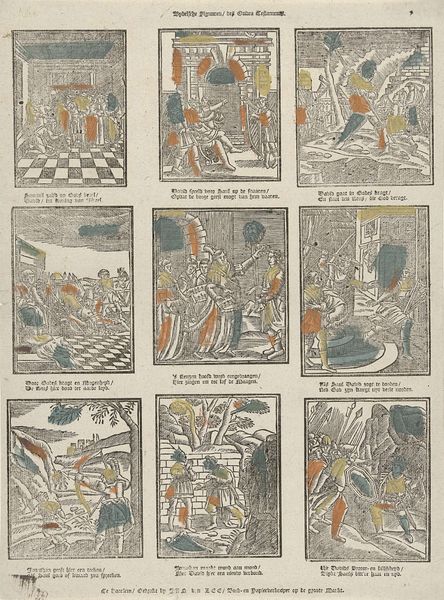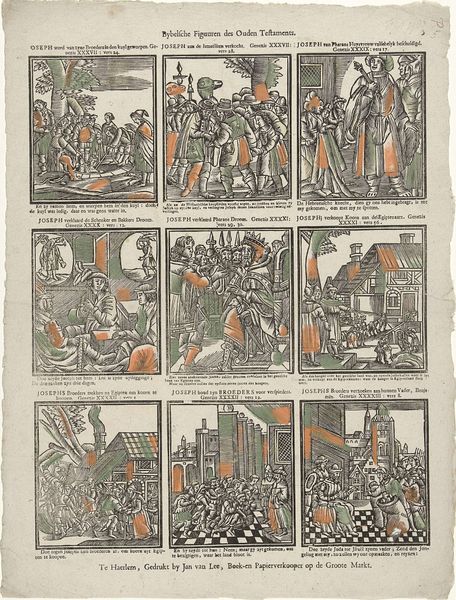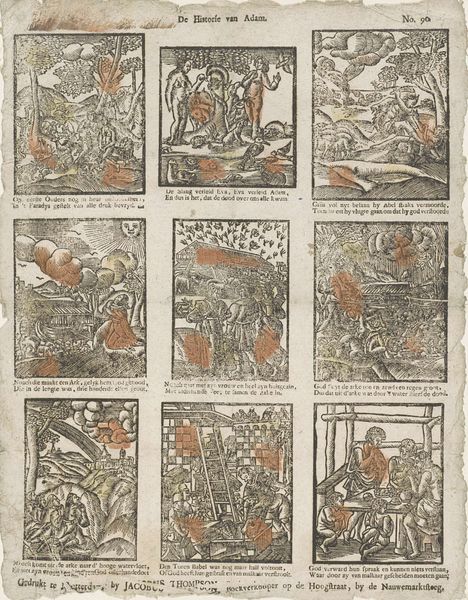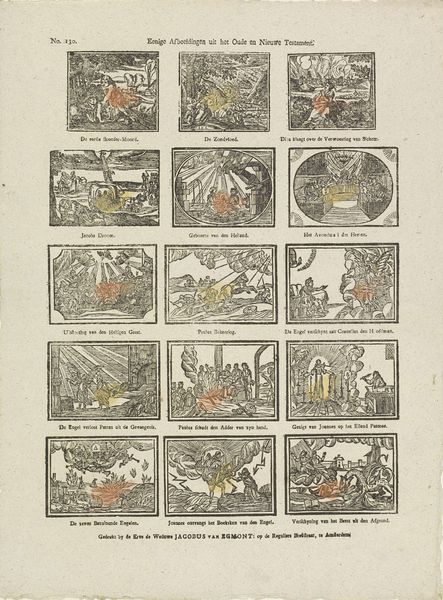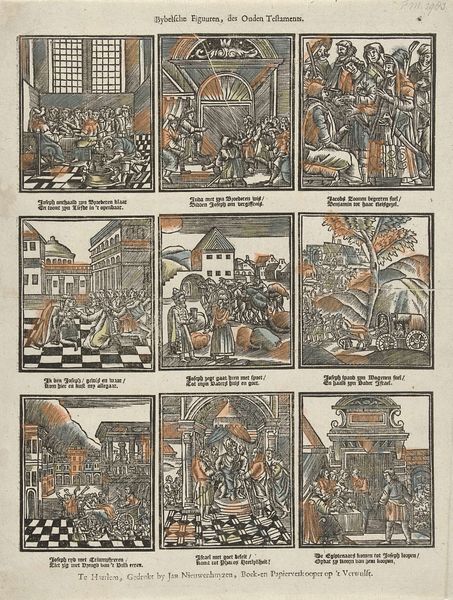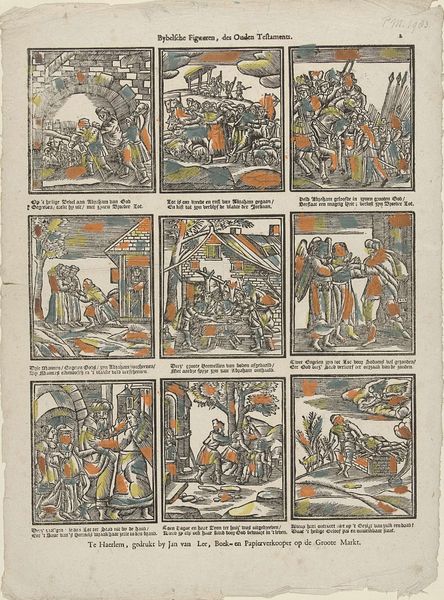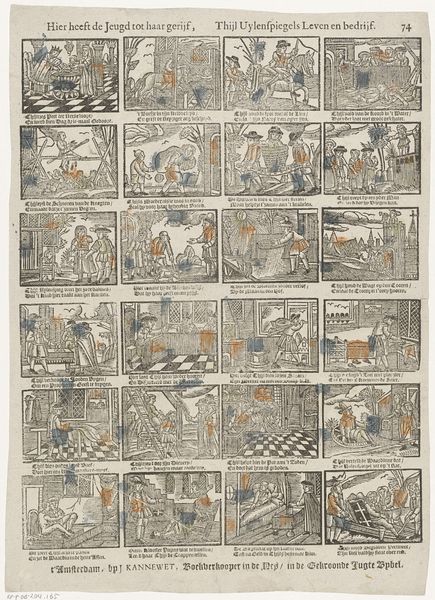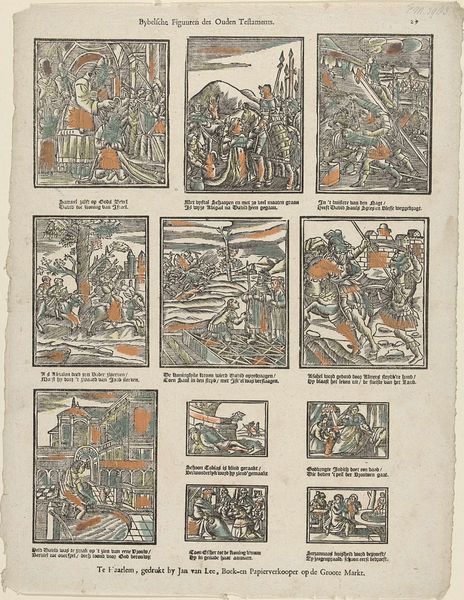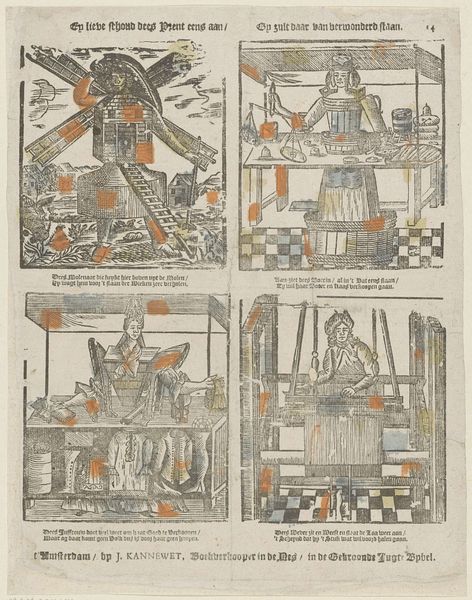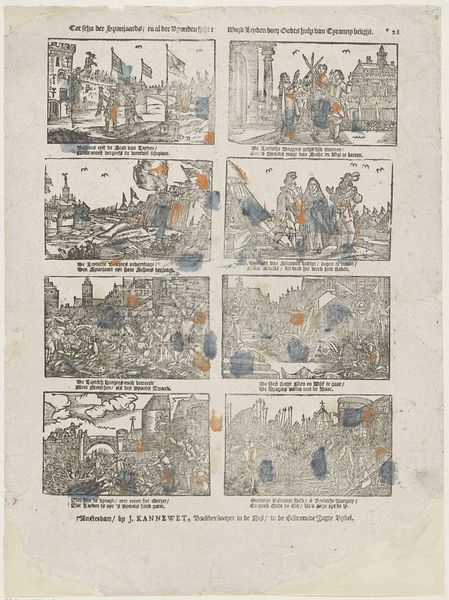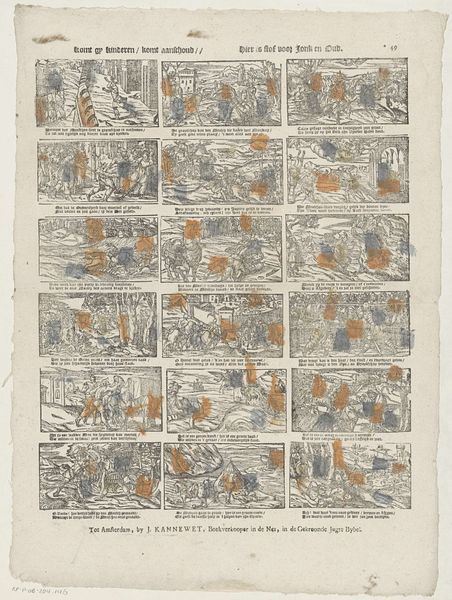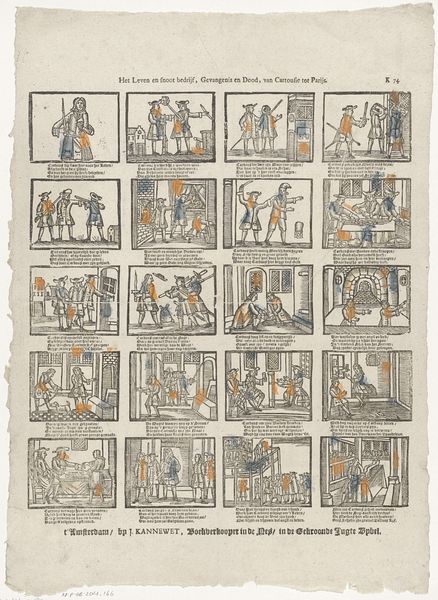
print, engraving
#
narrative-art
#
baroque
# print
#
figuration
#
history-painting
#
engraving
Dimensions: height 395 mm, width 285 mm
Copyright: Rijks Museum: Open Domain
Curator: Here we have a print from between 1743 and 1758, titled "Bybelsche Figuuren, des Ouden Testaments", created by Jan Nieuwenhuyzen. It is currently held in the collection of the Rijksmuseum. Editor: What strikes me immediately is the comic-book-like arrangement of these small narratives; each vignette holds such graphic potential for the time. There’s a forceful visual grammar at play. Curator: Absolutely. Each of these scenes encapsulates stories from the Old Testament, doesn’t it? For example, we can see what appears to be Jonah being swallowed by a whale in the top left quadrant. These images aren’t simply illustrative; they are acting as symbolic touchstones. Editor: Precisely! Think of the whale image – it's less about the zoological reality of a whale and more about representing divine judgment and subsequent deliverance. That fish almost resembles a grotesque theatre mask; it feels performative. What really grabs me are the blocks of solid color against the monochrome outlines. They make the plane really snap into focus. Curator: Good observation. Consider the pervasive depiction of angels. Their consistent appearance highlights the constant intervention of the divine. Moreover, note the recurring architectural details and structured interior spaces within the grid: they lend each little section an iconic importance—and that is enhanced by how Jan chooses to organize his formal patterns of color. Editor: And it is color meant to accentuate—to emphasize moral underpinnings by heightening narrative elements. Curator: So the aesthetic choices echo the underlying cultural narrative. We see not just representations, but active symbols, alive with generations of accrued significance. Editor: Exactly. Looking closely has given us fresh perspectives on this piece—revealing complex symbolic languages.
Comments
No comments
Be the first to comment and join the conversation on the ultimate creative platform.
